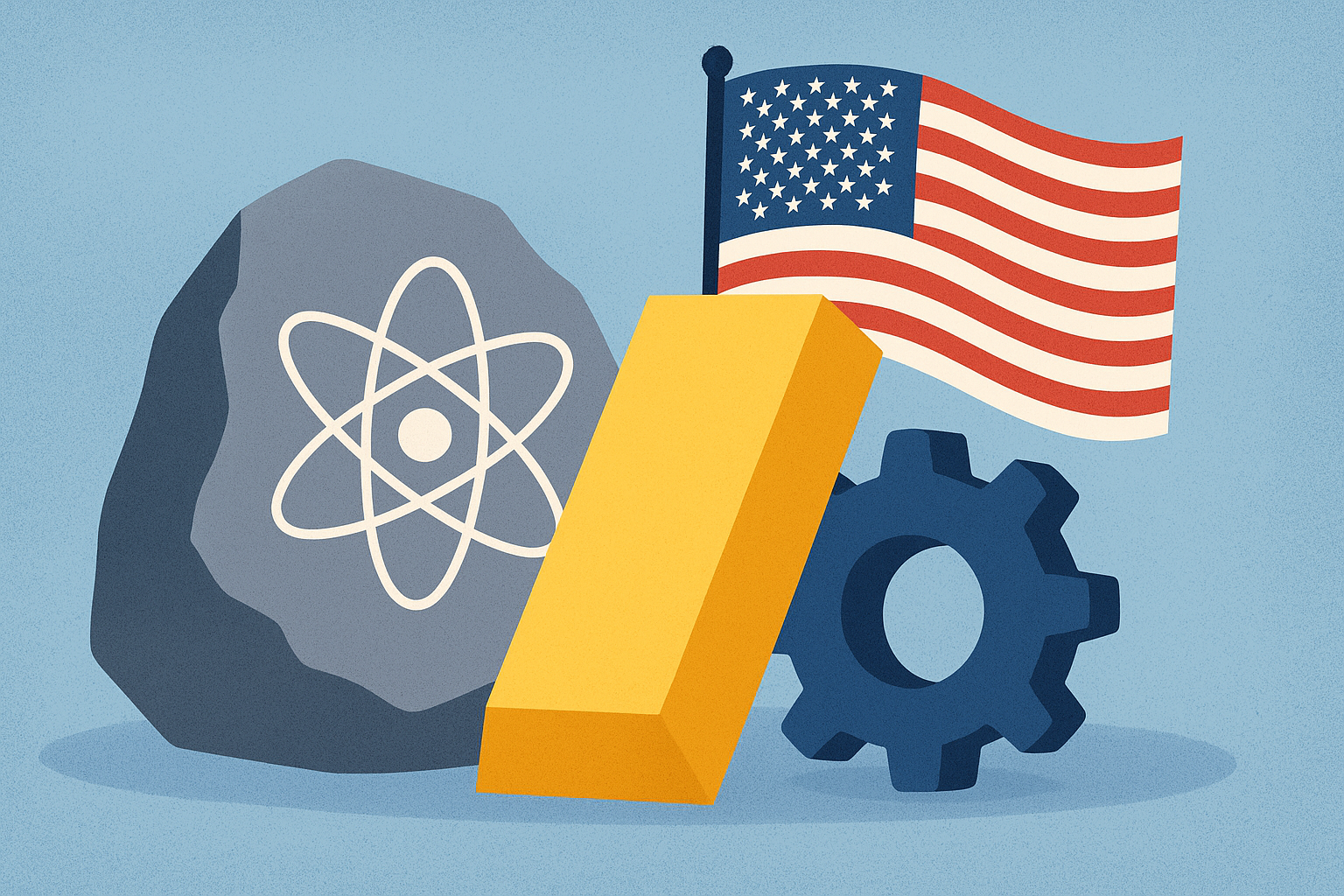Rare Earths Back in the Spotlight
Shares of Critical Metals (LSE: CRTM) surged more than 75% on Monday after Reuters reported that the U.S. government is considering taking an equity stake in the company behind Greenland’s Tanbreez rare earth deposit — one of the world’s largest untapped sources of critical minerals. The move comes as Washington intensifies its efforts to reduce dependence on China for rare earths — materials essential to defense systems, electric vehicles, and renewable energy technologies.
The report triggered an immediate wave of optimism across the mining sector, with investors interpreting it as a concrete sign that the U.S. is ready to take a direct, strategic role in securing mineral supply chains. In an age defined by energy transition and geopolitical rivalry, this isn’t merely a policy headline — it’s a signal of how national security and capital markets are converging.
Why This Matters for Investors
Rare earths are not rare in quantity, but rare in accessibility. Over 80% of global processing is controlled by China, giving Beijing outsized influence over the downstream industries that rely on them — from semiconductors and EV motors to advanced military systems.
Washington’s interest in Greenland’s Tanbreez project underscores a shift from passive funding to active ownership. A government equity stake would not only give the U.S. leverage over strategic assets but also send a clear message: securing critical minerals is now part of the broader defense and industrial strategy.
The Tanbreez site reportedly contains over 19 million tonnes of rare earth-bearing material, including neodymium, praseodymium, and dysprosium, which are crucial for high-performance magnets used in electric motors and wind turbines. Analysts from Benchmark Mineral Intelligence note that global demand for these minerals could triple by 2035, driven by accelerating EV adoption and clean-energy mandates.
For investors, the implications are twofold:
- Government-backed projects in the critical mineral space are poised to see higher valuations and reduced financing risk.
- The emerging “resource nationalism” dynamic may elevate the strategic value of mining companies operating in geopolitically stable jurisdictions like Greenland, Canada, and Australia.
Strategic Context: The New “Resource Cold War”
This isn’t Washington’s first attempt to build supply chain resilience. The Inflation Reduction Act (IRA), passed in 2022, already allocated billions in funding to domestic mineral processing and EV battery supply chains. But ownership marks a new phase — one that blurs the line between industrial policy and market competition.
According to BloombergNEF, the U.S. currently meets less than 10% of its domestic demand for rare earths, relying heavily on imports from China and Southeast Asia. With global trade tensions persisting, a direct stake in a non-Chinese supplier like Critical Metals could serve as both an economic and geopolitical hedge.
At the same time, the move may ignite competitive responses from allies. The European Union and Japan have already launched strategic raw materials initiatives, and Australia recently doubled its funding for the Critical Minerals Facility. As resource security becomes a matter of sovereignty, cross-border partnerships — and rivalries — are likely to intensify.
Industry and Market Reaction
Critical Metals’ stock price skyrocketed after the Reuters report, with analysts from Liberum Capital calling it “a watershed moment” for the rare earth industry. “If Washington takes a direct stake, it could change how investors perceive the risk profile of early-stage mining projects,” the firm noted.
The broader Metals & Mining index saw mild spillover effects, with lithium and cobalt miners gaining 2–4% in European trading. Institutional investors have started revisiting mining equities, which have lagged other commodities this year due to soft demand from China. This latest development could reframe the sector as a defensive play with geopolitical upside.
Still, caution remains warranted. Rare earth mining projects are capital-intensive and environmentally sensitive. McKinsey & Company estimates that only one in five announced projects globally reaches commercial production, due to permitting, ESG compliance, and technical hurdles. Investors must weigh long-term potential against near-term volatility and execution risk.
Future Trends to Watch
- Government Equity Involvement: Expect more cases of Western governments taking stakes in strategic resource firms, signaling a new model of “sovereign industrial capitalism.”
- Processing Independence: Beyond mining, the next frontier is processing capacity — where China remains dominant. Watch for U.S. and EU funding toward refining infrastructure.
- Greenland’s Rising Importance: As climate change melts Arctic routes and exposes mineral-rich land, Greenland could become the new frontier of mining geopolitics.
- ESG and Permitting: Increased scrutiny could delay projects despite policy support. Sustainable extraction methods will define which firms secure long-term investor trust.
Key Investment Insight
Direct U.S. government involvement in critical mineral assets signals a structural, not cyclical, shift. Investors should position portfolios for multi-decade trends in supply chain security, EV materials, and defense-linked commodities. Companies with early-stage exposure to rare earths, lithium, and cobalt in politically stable regions stand to gain the most. However, due diligence on technical feasibility, local permitting, and environmental impact remains essential.
Stay tuned with MoneyNews.Today for daily, data-backed investor insights on emerging sectors, market inflection points, and global policy shifts shaping tomorrow’s opportunities.





